This is a Kodak Retina IIa rangefinder camera built by Kodak AG, the German subsidiary of the Eastman Kodak company. Kodak released a series of German built Retina cameras starting with the original Retina in 1934, all the way through the non-folding Retina S2 in 1969. Throughout the mid 20th century, Kodak was not known as a premiere camera maker, but the Retina line stood out as the exception to this rule.
Film Type: 135 (35mm)
Lens: 50mm f/2 coated Schneider Xenon 6 elements
Focus: 3.5′ to Infinity
Type: Coupled Rangefinder
Shutter: Synchro-Compur Leaf
Speeds: B, 1 – 1/500 seconds
Exposure Meter: None
Battery: None
Flash Mount: Coldshoe and PC Sync
Manual: http://www.cameramanuals.org/kodak_pdf/kodak_retina_iia.pdf
History
You don’t have to be a camera collector or even a photographer to know who Kodak is. The Eastman Kodak company has been one of the most influential companies in the photography industry from the moment the company was founded in 1888, all the way to the start of the 21st century. They dominated the film and photographic paper market for over 100 years. As recently as 1976, the Kodak company accounted for over 90% of the film sold in the United States.
In addition to film and photographic supplies, Kodak had several successful lines of cameras, starting with the Brownie box cameras of the early 20th century, a long line of folding cameras, and then several inexpensive casual cameras in the mid 20th century. Chances are very good that almost every person reading this blog has an ancestor that at one time owned a Kodak camera.
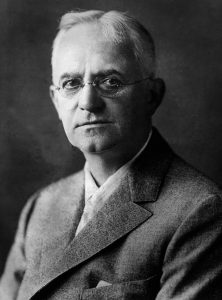
One of George Eastman’s principles in founding the company was to sell cameras cheaply to people in an effort to get them to be repeat customers by buying film and other supplies from him. This type of sales model is still used today with smartphones and video game consoles where the product is sold to the consumer at a loss to the company, with the understanding that customers will be locked in with continuing purchases.
While this business model was very successful in making profits for Kodak, it earned them a reputation by the middle of the 20th century as a lower tier camera maker. Many of their most popular models were simple cameras made of plastic, had relatively slow shutters, and often left out features that were available on more expensive models from Germany and Japan. By the time Word War II ended, if you wanted a top of the line precision camera, you generally would buy something made by someone else.
Perhaps realizing that Kodak lacked the expertise to make truly world class cameras, in 1931 the Eastman Kodak company acquired the Nagel-werke company in Stuttgart, Germany. The Nagel-werke company was founded in 1928 by Dr. August Nagel who had previously worked for Zeiss-Ikon, and had many years of experience building cameras. This new German subsidiary was given the name Kodak AG, and this was where future lines of cameras would be built with German expertise and precision, but sold under the Kodak name.
In the 1920s and 30s, there were a large number of different film formats competing for the purchasing dollar of the public. Many of these early film types were proprietary to a specific brand or make of camera, and could not be used in other models. Around this time, some European companies had started using a type of 35mm film originally designed for cinema and began rolling it into their cameras. 35mm film had the advantage of being a lot smaller than other types of roll film used at the time, which earned it the nickname as a “miniature format”. In addition to being smaller, it also had sprocket holes which meant it could be more easily rolled and advanced within the camera. Although these early formats of 35mm film are the same physical size as modern 35mm film, the sprocket holes did not maintain the same spacing, and not all of these early formats came in a standardized cassette.
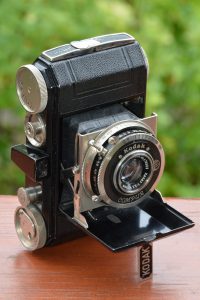
After forming Kodak AG, the Eastman Kodak company began work on an all new standard of 35mm film which would be called 135 format film. This new format would use 35mm film with standardized sprocket spacing and it would come in a standard felt-lined cassette which could be easily loaded in daylight. When the film was wound into a camera, it would stay inside the camera until the end of the roll, at which time the film could be “rewound” back into the cassette and sent in for developing, all while protecting the light sensitive film. The first camera to be released using this new 135 format was the original Kodak Retina in 1934.
Both the Retina and the new 135 format film were immediate successes. Within 2 years, several competing cameras were released such as the Certo Dollina and Wirgin Edinex from 1935, and the Argus A from 1936, all of which used 135 film. After World War II, almost every new camera being released used 135 format film. This style of film remained popular throughout the rest of the 20th century and is still the most common type of film still in use today in 2015.
The Retina was designed by Dr. August Nagel, who continued to work for Kodak AG after their acquisition. The design of the first Retina borrowed heavily from an earlier camera Nagel had created in 1929 called the Vollenda, which was a compact folding camera which used 127 roll film. Nagel had been building his own cameras since at least 1908 when he formed his first company and used his extensive experience in designing the Retina camera.
When it was released, the first Retina was pretty advanced for it’s time. It was a folding “clamshell” style camera that was very compact and could easily fit into a coat pocket. It could be purchased with a variety of shutters and lenses, all of which were way ahead of anything Kodak had released in the past. A typical setup included a Schneider-Xenar 4-element 5cm f/3.5 lens and a Compur-Rapid shutter capable of speeds as fast as 1/500th second.
There were three primary models in the Retina line, known as the Retina I, II, and III. This numbering system was not sequential, meaning that the II did not replace the I, rather, the different numbers indicate features of the camera. Retina Is were all scale focus viewfinder cameras. Retina IIs featured a rangefinder on the top plate of the camera for focusing, and the later Retina III had both a rangefinder and a selenium cell light meter for exposure calculation. Many variants of the I, II, and III were produced simultaneously. To further complicate things, when a Retina received a significant upgrade, a letter was added to the end of the number indicating a new version, so for example the Retina IIa is a Retina II with several changes.
To differentiate between all of the types of Retinas, a 3-digit type code was assigned by the factory to each version to help identify them. Sometimes the 3 digit code would change, but there would be very little difference between the two versions. The first Retina model, which was available from 1934 – 35 was called the Type 117. By the start of World War II, there were no less than 12 different “types” of Retinas.
In the summer of 1941, camera production at the Stuttgart factory ceased, and the German government took over control from Kodak and used it for their war effort. By 1946, control of the factory returned to Kodak AG and they resumed making Retina cameras. Although the first post-war cameras were very similar to the pre-war models, there were subtle differences and therefore had different type numbers. For example, the pre-war Retina IIa was a type 150, and the post-war Retina IIa was a type 010.
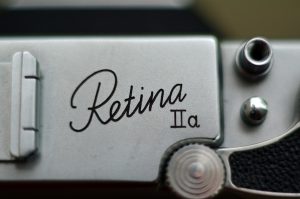 As time passed, the Retina cameras continued to evolve. By 1954, the Retina line of cameras offered light meters, interchangeable lenses, larger and brighter viewfinders, and redesigned film counters. All of these features helped maintain the Retina’s reputation as a state of the art camera, but it also increased the size of the camera. The later cameras became larger and heavier, and as a result, lost some of the appeal of a small folding camera that could easily fit in your pocket. This change partially divides the collector’s market for Retina cameras. Some people prefer the more advanced features and better usability of the brighter viewfinder in the later models, but some prefer the smaller and more compact design of the earlier ones.
As time passed, the Retina cameras continued to evolve. By 1954, the Retina line of cameras offered light meters, interchangeable lenses, larger and brighter viewfinders, and redesigned film counters. All of these features helped maintain the Retina’s reputation as a state of the art camera, but it also increased the size of the camera. The later cameras became larger and heavier, and as a result, lost some of the appeal of a small folding camera that could easily fit in your pocket. This change partially divides the collector’s market for Retina cameras. Some people prefer the more advanced features and better usability of the brighter viewfinder in the later models, but some prefer the smaller and more compact design of the earlier ones.
In 1958, a solid bodied Retina was released which no longer featured a folding lens. By 1960, the last of the folding Retinas was made and throughout the rest of the 60s, only solid bodied models were available. Kodak also used the Retina name on an unrelated line of SLRs known as the Retina Reflex from 1957 – 1966.
After the end of the Retina line, Kodak AG continued making cameras but focused their attention on lower end Instamatic models that used 126 and 110 format film. I can’t find any information as to why such a reputable factory who made such excellent cameras, suddenly changed their focus to simple cameras.
Today, the Kodak Retinas are seen as the shining exception to the rule that Kodak didn’t make high end cameras. If you were into photography in the early to mid 1950s, this was the camera to have. Sadly, many people couldn’t afford one though. In 1951, when the Retina IIa was released, it had a retail value of $168.50 which would be comparable to around $1,500.00 in 2015.
The Retinas were well built compact cameras with good shutters and excellent lenses that are still capable of extremely nice shots. For these reasons, there are many people who specifically collect Retina cameras. Although they were built in Germany, they are the only example of an American brand name camera sold with such high precision and quality. As a result, used Retinas in good condition can be quite expensive. Its not unusual to find a good condition Retina sell for over $100. Some of the less common models can go even higher than that.
My Thoughts
If you’ve read more than one of my reviews here, you’d know I am a sucker for a cool camera with a neat story. I first started reading about the Retinas early on in my pursuit of old cameras, and I added it to my mental list of “cameras to look for”. As I covered in the History section above, there were many variants and types of the Retina camera. The earlier models were compact and comfortable to hold, and didn’t waste space on extravagant features that you really don’t need such as a light meter that probably wasn’t accurate anyway. The stock Xenon lens is already one of the best out there, so there really wasn’t a lot to be gained with an interchangeable lens, and going with a different focal distance on a rangefinder is always a tricky proposition.
After doing some research, I concluded that the post-war Retina IIa was the model for me. It had everything I wanted, a nice and compact design, a solid rangefinder, and a clean design (I feel as though all cameras with selenium light meters look weird). Yeah, the later models had brighter rangefinders, and just as good of a lens, but overall, I still felt like the IIa was the model to look for.
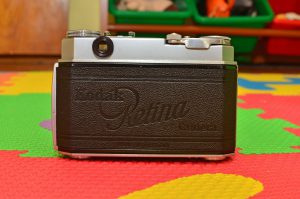
As I started to learn, for all of the good things to be said about the Retinas, they also have several ‘gotchas’ that a potential buyer needs to look for. The first and most obvious, is condition. For whatever reason, this line of Retina camera is especially prone to corrosion. Many Retinas have a greenish oxidation around the edges of the camera, the paint around the film door almost always chips away, and the backs often have Zeiss bumps which is a buildup of corrosion under the leatherette. Peeling or damaged leatherette on other cameras is pretty common, and if you are willing, there are many third party companies that make new leather skins for old cameras. I’ve done it myself on some of my other models, and while you could technically do it on a Retina, you’d lose the cool Retina script logo on the film door, the Kodak logo on the front clam shell, and the pin-striping around the edges. For me, this is one of the critical design elements of the camera, and it wasn’t something I was willing to lose.
The Retina IIa had a very common problem with the film counter in which a spring could break causing it to stop working. Finding a replacement for this spring is often difficult, so once this happens, unless you have a parts donor Retina to take one from, you pretty much have to accept that the frame counter will never work again.
Another potential problem area on many Retinas are in the complex pins and levers that translate winding motion from the knob on top of the camera into the shutter cocking rack. There are a series of locks and catches that need to be in the exact position for the cocking mechanism to work properly and if a previous owner was careless or forced something, things could bend, break, or deform the metal, making the camera inoperable. If a Retina is listed as being difficult to close or open, stay away from it as these problems are extremely difficult to repair.
Of course, all of these issues are in addition to the typical problems that any 60+ year old rangefinder camera could have, such as sticky or slow shutter speeds, misaligned rangefinders, cloudy or hazy optics, lens fungus, and stiff focus or aperture movements.
I was fortunate to find the camera pictured above for a good price. It was one of those “I don’t know anything about this camera” auctions, and the seller listed it as being in excellent condition, but since he had no ability to test it, he was selling it in as-is / parts only condition. These type of auctions are always risky, because the seller could be telling the truth and they have no clue if the camera is working, or they may know there’s a problem, and they’re hiding behind their ignorance.
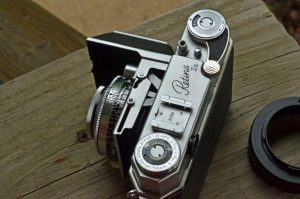
The serial number of my camera is 611564, and according to the Retina Rescue Serial Number page the type 016 Retina IIa was sold in the range 400093 – 400402 and 405049 – 893831 which means that approximately 500,000 were made. My example begins with 611xxx, which tells me it was in the first half of models that were made. The Retina IIa was in production from 1951 – 1954, and since more cameras are usually made in the first few years of a models lifespan, and mine is in the first half the ones being made, I conclude that mine was probably made in the later half of 1952. I haven’t found any other information online that helps narrow it down more than that. 1952 was a cool year though, since its the same year my mother was born!
One additional thing about the serial number is that Retinas that were imported for sale in the US will always have the letters “EK” before the serial number. Since mine lacks those letters, mine was not originally built to be imported. I have found information however, that many models that were built for sale overseas, were sold to American servicemen after World War II and many of those wound up here anyway. So whether or not mine was bought by an American and brought home, or it really spent part of it’s life overseas and somehow made it “across the pond”, I’ll probably never know.
Thankfully, when the camera arrived, it was in very good shape. All of the mechanics seemed to work OK, the film counter worked, the focus and aperture wheels all moved properly. The only issue I could see with the camera was a slight amount of haze inside of the lens. The outer two lens elements unscrew from the camera pretty easily, so I was able to give them a good cleaning, but I could still see some more haze in between some of the elements. Based on my research, the Xenon 2.0 lenses often develop haze over the course of 60+ years due to the internal lubricants degrading and releasing off-gases. I’m not sure how true this is, but it’s what I read and it does sorta make sense. Sadly, the haze on my lens appears to be inside the front two elements, which are not easy to separate, so I just left it alone. Its not terrible, and I doubt it’ll make a significant impact on the image quality.
Realizing that loading some film into the camera was the only way for me to know how much of an impact the haze would have, I put in a roll of Kodak Max 400 and went shooting.
My Results
Using the Retina is a pretty cool experience. Of all the cameras in my collection, I feel that the Retina has the best compromise of a “vintage” experience, while still being easy to shoot, and capable of excellent shots.
Sure, my c. 1929 No.1A Pocket Kodak folder is a lot older, but its not exactly easy to use, and the two piece lens can only resolve so much detail. The Argus C3 also provides an antique camera experience, but the separate rangefinder and viewfinder windows aren’t exactly convenient, and that camera isn’t the easiest to hold or put in your pocket.
There was a recent discussion on the Vintage Camera Collectors group on Facebook from a member asking what was a good starting camera for someone looking to get into old film cameras, but was still easy to use, and could be had for under $100. While many members offered great suggestions, my suggestion was the Retina IIa. Good condition ones can easily be found for well under $100, they are easy to use, and at over 60 years old, certainly qualify as a “vintage” camera.
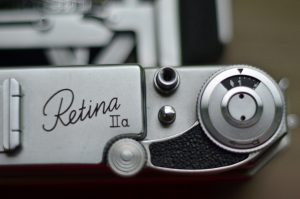
Like any camera without an exposure meter, everything is “Sunny 16” with this camera, or just do your best to guess. I’ve said it many times in my reviews and in my Guide to Buying Old Cameras, that getting the exact perfect exposure settings is not very important. Just get them close and most likely your pictures will turn out OK. If you really have doubts, try shooting in B&W first, and you’ll have even more leeway.
Loading film into the Retina is a pretty straightforward process. There aren’t any special steps that aren’t typical of loading any 35mm camera. The only thing to be aware of is that the take up spool rotates counter-clockwise, so keep this in mind when inserting the film leader into the slit in the take up spool.
The one thing about this camera that is not typical of most other camera is in regards to the frame counter. The counter does not automatically reset when the film door is opened, but it also counts backwards unlike pretty much every other camera which counts upward. This means that after loading a new roll of film, you manually turn the frame counter to the number of exposures left on the roll (36 or 24), and then as you expose each frame, the counter counts down. When you reach 0, you are at the end of the roll. Frankly, I think this makes more sense than counting upward, and I wonder why more cameras weren’t like this.
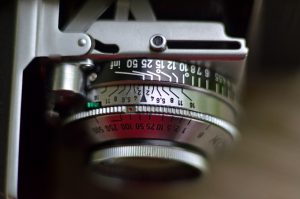
The first step in using this camera is to open the clam shell to expose the lens. A small button on the bottom of the camera will pop open the front door. On my camera, once the door is released, it must be helped the rest of the way open as there is not enough tension on the door to make it swing all the way on it’s own. I am not sure if this is normal, or just how my particular example is. The door and lens assembly are linked together, so opening the door automatically pulls the lens assembly out to its shooting position.
Closing this door is a two step process. First, the lens must be fully retracted into the Infinity position, and you must simultaneously press two release buttons, one on the top of the lens assembly, and one on the bottom. One both release buttons are pressed in, the shutter assembly can be pushed into the body of the camera and the door will close behind it. If it feels like the door doesn’t want to close, make sure the lens is fully retracted in the Infinity position.
Compared to some other folding cameras like my Certo Dollina where the door gets in the way of some of the settings on the lens, the door on the Retina swings out to the right (from the photographer’s perspective) which means that neither the focus ring, shutter speed ring, or aperture settings are blocked by the door.
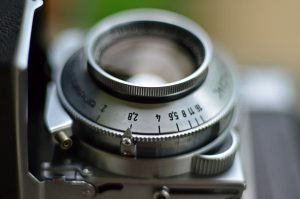
Adjusting the focus on this camera is achieved by moving a raised half circle piece of metal that sticks out from the lens assembly on the lower left corner of the lens. You could actually grip the focus ring at any point on the camera, but this raised grip makes it easy to “feel” for. The shutter speed is selected by turning a knurled ring on top of the lens assembly, and the aperture size is selected by moving a lever on the bottom of the lens. The aperture selector has a prominent protrusion that makes it easy to locate while holding the camera at eye level. With a little bit of experience, a photographer should have no problem accessing focus, aperture, and shutter settings without ever lowering the camera from the eye. That’s not something that could be said of all SLRs.
The top plate of the camera has all of the same features you’d expect of a film camera, including the shutter release, film advance lever, frame counter, rewind knob, film reminder (this is just a reminder and has no impact on anything in the camera), a cold shoe, and one more button called the ‘film release button’. Page 38 of the Retina IIa user’s manual describes this button as being used for swapping out a partially exposed roll of film. I don’t know how often someone would want to do this, and frankly, the explanation in the manual seems pretty hard to follow. I have in rare instances had to remove a partially exposed roll of film from a camera, but I didn’t need a special button to do it, so I don’t really understand what use this button is for. On another forum, I read that this button can also be used to intentionally take double exposures too, so maybe its useful for that, if you like double exposures (I don’t).
The viewfinder is bright, and while not as large as on the Yashica Electro or Konica Auto S2, its definitely bigger than most 50s era rangefinders. When this camera was first released, I am sure photographers were impressed by its size. I had no problems using the rangefinder on this camera in low light and indoors.
I mentioned earlier that there was a bit of haze inside of the lens elements that I was unable to clean off. Trusting in the fact that small imperfections on the lens often don’t have a noticeable impact on the pictures, I was hopeful that I would get some nice shots from the camera, and boy, did I!
I’ve written several of these camera reviews in the winter, and have only been able to go out in the drab, wintry landscape dominated by grays and blues. The Retina is one of my first reviews featuring shots from spring, and I don’t think I could have gotten sharper or more colorful results from any of my other cameras. In fact, the Xenon 2.0 lens lives up to its claim as an extremely sharp lens, and combined with the ease of use of the Retina’s rangefinder, I found that more of my shots were perfectly in focus than on a typical roll through any of my Nikon, Canon, or Minolta SLRs. I have very poor vision, and while I usually can get focus on an SLR, I don’t always get it right, and its much harder indoors and in low light.
The lens and ease of use of this camera puts it on par with the f/1.7 Yashinon lens on my Yashica Electro. I consistently get great shots from both cameras, and although the Yashica has an auto mode and this one doesn’t, both cameras are capable of extremely nice shots. As much as I love my Yashica, I think that whenever I feel the need to grab a rangefinder and go out shooting, the much smaller size of this camera might give it the edge over the much larger Electro.
So, if you couldn’t tell by now, I love this camera. There is a pretty big fan base of Kodak Retina users out there, and for good reason. I realize I have only one copy of one variant, but from what I’ve read, all of them are capable of nice shots like this. I don’t see myself ever having a large collection of Retinas, but after my results from this one, I might look out for a few more. I’ve heard that the IIc is really great too and has an even better viewfinder than this one.
Tips, Tricks, and Things to Remember
1. The frame counter on the Retina counts backwards and stops at frame 1. The thing to remember is that the film advance will not work once the frame counter reaches 1, so if you use a roll of film with 36 exposures, you must remember not to set the frame counter to 24, otherwise you risk having 12 unusable exposures at the end of your roll. As a matter of fact, since you can usually get 1 or 2 extra frames on every roll, you should pay attention to start a new roll above the total number of exposures.
2. This is a minor one, but the front door will not close if you do not remember to move the focus lever to infinity. If you press on the door too hard while the focus lever is out of position, you can actually damage something.
My Final WordHow these ratings work |
You should always set your expectations pretty high any time you pick up a Retina, and for good reason. These are some of the very best cameras of the mid 20th century. They are compact, easy to use, and always have great optics. Although the later Retina IIc improves upon the design of this IIa, it adds a very annoying feature called a coupled EV scale which at the time was designed to simplify exposure calculation, but it merely gets in the way and slows down the process. Without it, the IIa is easier to use and allows for quicker exposure changes while holding the camera to your eye. In addition, the Retina IIa has the film winder lever in the more traditional location on the top plate of the camera which makes shooting with it a more familiar experience. This is simply one of the best compact rangefinders ever made. | ||||||
| Images | Handling | Features | Viewfinder | Feel & Beauty | History | Age | |
| 2 | 2 | 1 | 1 | 2 | 1 | 30% | |
| Bonus | +1 for the complete package of a compact camera that is easy to use, has an accurate and easy to use rangefinder, and excellent optics | ||||||
| Final Score | 12.7 | ||||||
Additional Resources
https://www.cameraquest.com/retIIa.htm
http://camerapedia.wikia.com/wiki/Kodak_Retina_IIa
http://www.photoethnography.com/ClassicCameras/KodakRetina.html
http://www.dantestella.com/technical/retina.html
http://en.wikipedia.org/wiki/Kodak_Retina
http://retinarescue.com/retina2atype016.html
http://www.lakiere.info/Tabel_Retina.htm
https://bryantakespictures.wordpress.com/2010/03/18/kodak-retina-iia/
https://www.flickr.com/search/?tags=retinaiia

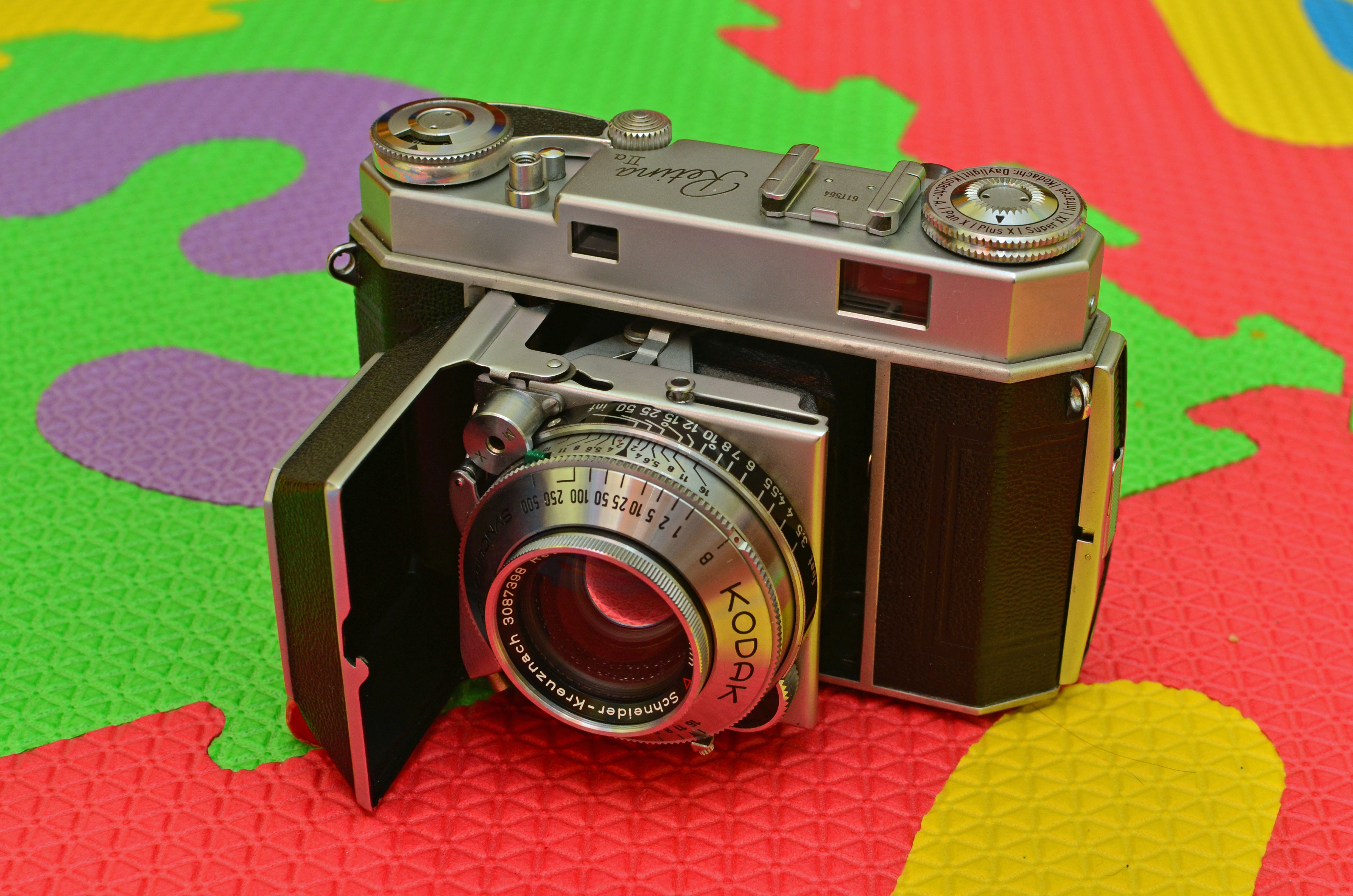
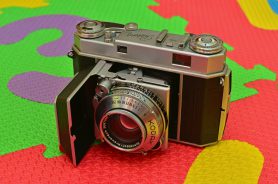
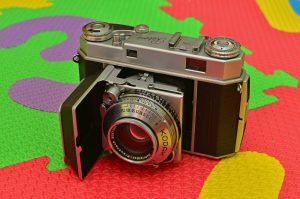












Great write-up about a great RF camera.
I have serial 893222 bought off eBay for about 89$ that is as new as can be. Perfect back with no bumps or peeling paint. Everything works.
Also found a NOS hard case.
I do not take pics with it but would expect nothing but great results.
I rate the camera at 99% for condition.
Since I am down-sizing at my advanced age I may put this on eBay, but not for 89$ !
I love mine. Bought at a antique store for $40 and it has given me great results. After reading a manual (thanks Butkus) it has become my go-to when i feel like shooting a classic folder camera. I also appreciate the compactness too. Its a great carry camera and its always a conversation starter. Serial #575127 with leather case.